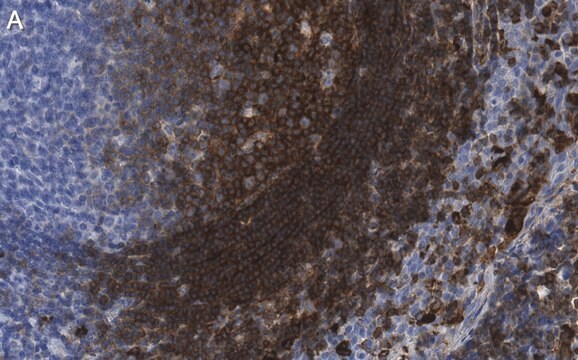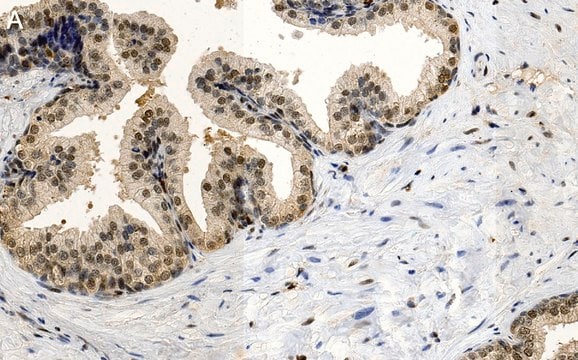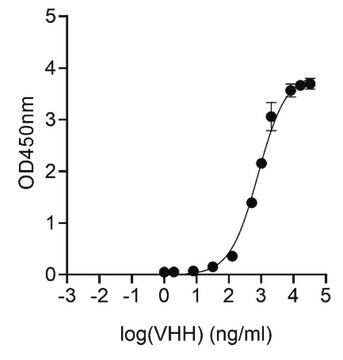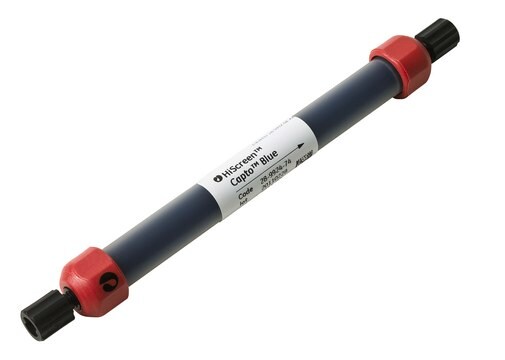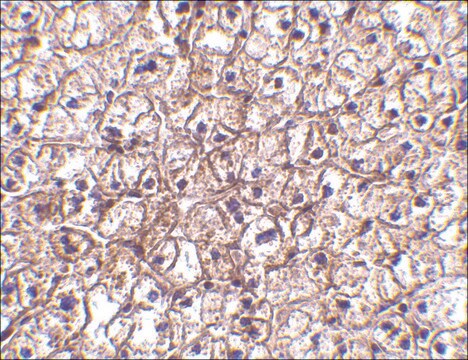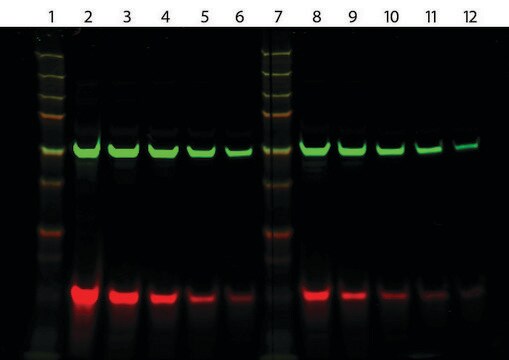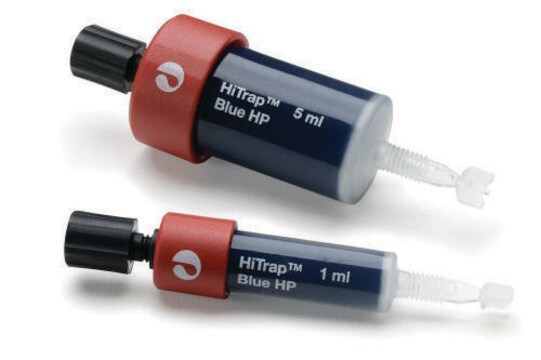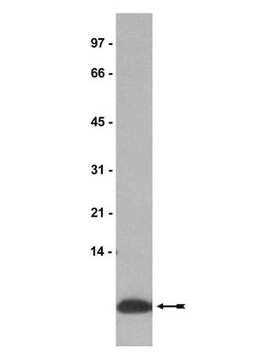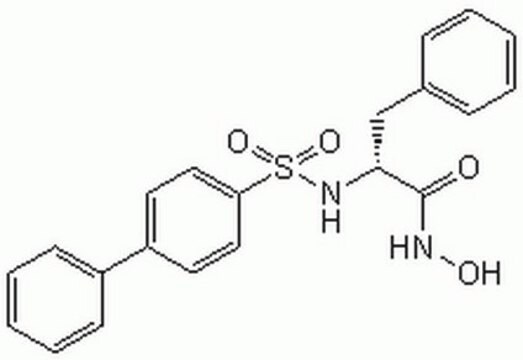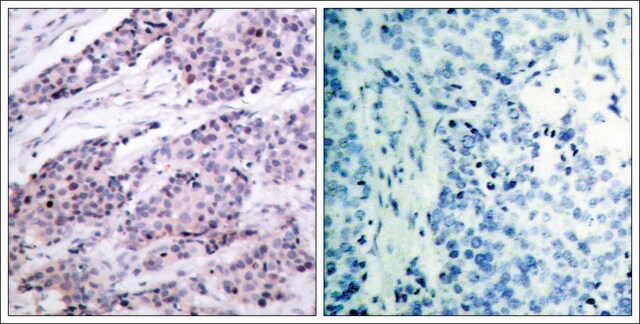General description
We are committed to bringing you greener alternative products, which adhere to one or more of The 12 Principles of Green Chemistry. This antibody is Preservative-free, produced without the harm or sacrifice of animals and exceptionally stable to allow for ambient shipping and storage if needed and thus aligns with "Waste Prevention", "Designing Safer Chemicals" and "Design for Energy Efficiency".
Click here for more information.
ZooMAb® antibodies represent an entirely new generation of recombinant monoclonal antibodies. Each ZooMAb® antibody is manufactured using our proprietary recombinant expression system, purified to homogeneity, and precisely dispensed to produce robust and highly reproducible lot-to-lot consistency. Only top-performing clones are released for use by researchers. Each antibody is validated for high specificity and affinity across multiple applications, including its most commonly used application. ZooMAb® antibodies are reliably available and ready to ship when you need them.
Specificity
Clone 1F10 is a ZooMAb® rabbit recombinant monoclonal antibody that specifically detects Tyrosine-protein kinase ZAP-70 phosphorylated on tyrosine 493.
Immunogen
KLH-conjugated linear peptide corresponding to 10 amino acids surrounding phosphotyrosine 493 from the C-terminal region of human Zap-70.
Application
Quality Control Testing
Evaluated by Western Blotting in Cell lysates from C2C12 cells treated with pervanadate.
Western Blotting Analysis: A 1:25,000 dilution of this antibody detected Phospho-Zap-70 (Tyr 493) in lysate from C2C12 cells treated with 5 mM Pervanadate, but not in lysate from untreated cells .
Tested Applications
Immunocytochemistry Analysis: A 1:1,000 dilution from a representative lot detected Phospho-Zap-70 (Tyr493) in Jurkat cells treated with hydrogen peroxide (10 mM; 3 min.).
Flow Cytometry Analysis: 1 µg from a representative lot detected Phospho-Zap-70 (Tyr493) in one million Jurkat cells treated with hydrogen peroxide (10 mM).
Note: Actual optimal working dilutions must be determined by end user as specimens, and experimental conditions may vary with the end user.
Target description
Tyrosine-protein kinase ZAP-70 (UniProt: P43403; also known as EC:2.7.10.2, 70 kDa zeta-chain associated protein, Syk-related tyrosine kinase) is encoded by the ZAP70 (also known as SRK) gene (Gene ID: 7535) in human. ZAP-70 is a tyrosine kinase that is expressed in T cells and NK cells and plays an essential role in regulation of the adaptive immune response. Its expression is also observed in early thymocytes and pro/pre-B-cells. It is involved in regulating motility, adhesion, and cytokine expression of mature T-cells and thymocyte development. In quiescent T cells, it is cytoplasmic and upon TCR activation, it is recruited at the plasma membrane by interacting with CD247/CD3Z. ZAP-70 contains two tandem SH2 domains (aa 10-102 and 163-254) that bind to the doubly phosphorylated tyrosine-based activation motif (ITAM) of CD247/CD3Z and the non-canonical phosphorylated tyrosine-based activation motif (TAM) of Ras Homolog Family Member H (RHOH). Its protein kinase domain is localized in amino acids 338-600. It has an interdomain B region (aa 255-337), located between the second SH2 and the kinase domain, contains 3 tyrosine residues (Tyr-292, 315, 319) that are phosphorylated following TCR activation. Phosphorylation of Tyr-315 and Tyr-319 is reported to be essential for ZAP70 positive function on T-lymphocyte activation, whereas Tyr-292 is shown to have a negative regulatory role. Within the protein kinase domain, Tyr-492 and Tyr-493 are also shown to be phosphorylated after TCR induction. Here Tyr-492 plays a negative regulatory role and Tyr-493 has a positive role and can be dephosphorylated by protein tyrosine phosphatase non-receptor type 22 (PTN22). Aberrant high expression of ZAP-70 has been reported in a subset of Chronic Lymphocytic Leukemia (CLL) subjects and reflects an unfavorable clinical outcome. This ZooMAb® recombinant monoclonal antibody, generated by our propriety technology, offers significantly enhanced specificity, affinity, reproducibility, and stability over conventional monoclonals. (Ref.: Chen, J., et al.(2020). Front. Oncol. 10; 595832; Fischer, A., et al. (2010). Semin. Immunopathol. 32(2); 107-116; Chan, AC., et al. (1992). Cell. 71(4); 649-662).
Physical form
Purified recombinant rabbit monoclonal antibody IgG, lyophilized in PBS, 5% Trehalose, normal appearance a coarse or translucent resin. The PBS/trehalose components in the ZooMAb formulation can have the appearance of a semi-solid (bead like gel) after lyophilization. This is a normal phenomenon. Please follow the recommended reconstitution procedure in the data sheet to dissolve the semi-solid, bead-like, gel-appearing material. The resulting antibody solution is completely stable and functional as proven by full functional testing. Contains no biocide or preservatives, such as azide, or any animal by-products. Larger pack sizes provided as multiples of 25 µL.
Reconstitution
0.3 mg/mL after reconstitution at 25 µL per vial. Please refer to guidance on suggested starting dilutions and/or titers per application and sample type.
Storage and Stability
Recommend storage of lyophilized product at 2-8°C; Before reconstitution, micro-centrifuge vials briefly to spin down material to bottom of the vial; Reconstitute each vial by adding 25 µL of filtered lab grade water or PBS; Reconstituted antibodies can be stored at 2-8°C, or -20°C for long term storage. Avoid repeated freeze-thaws.
Other Notes
Concentration: Please refer to the Certificate of Analysis for the lot-specific concentration.
Legal Information
ZooMAb is a registered trademark of Merck KGaA, Darmstadt, Germany
Disclaimer
Unless otherwise stated in our catalog or other company documentation accompanying the product(s), our products are intended for research use only and are not to be used for any other purpose, which includes but is not limited to, unauthorized commercial uses, in vitro diagnostic uses, ex vivo or in vivo therapeutic uses or any type of consumption or application to humans or animals.

